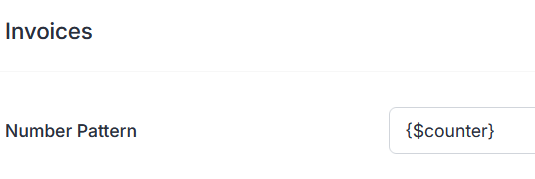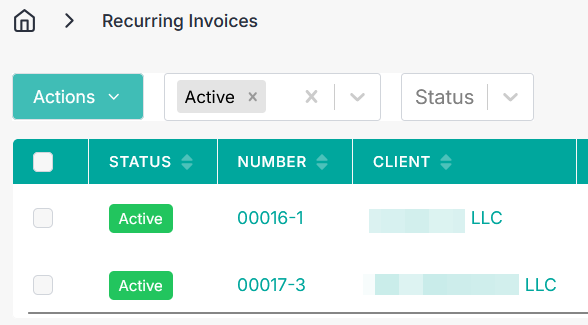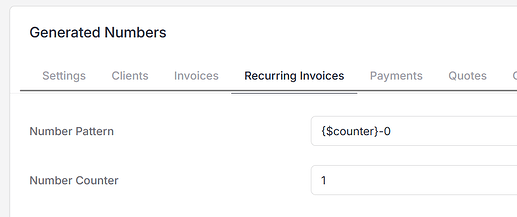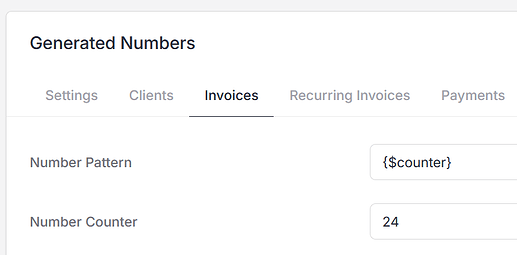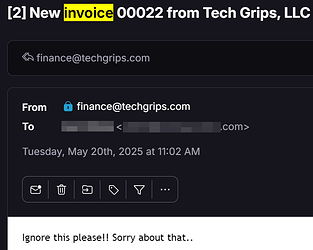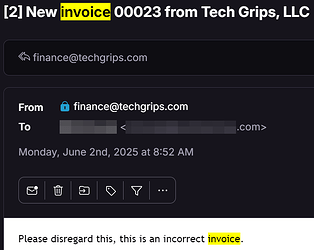Ahh, I’m sorry if this getting to be a bit painful. But that just doesn’t seem to be how Recurring Invoices work in my instance. 
From what I’ve observed in my instance, Recurring Invoices just generate a regular invoice with the line item details and client info copied over. The resulting generated invoice number is yielded directly from the Generated Number field value for regular Invoices.
For context, I’m a startup IT MSP, I have a few clients from personal connections so far. I currently have 2 clients on license subscriptions which are billed monthly, one for Google Workspace and one for M365, both setup in InvoiceNinja as Recurring Invoices.
Here is my Number Pattern for Recurring Invoices:
Here is my Number Pattern for regular Invoices:
Both of those Generated Number fields have been untouched for a couple months now.
A few weeks ago, Recurring Invoice #00016-1 generated Invoice #00022, which I had to adjust to become Invoice #00016-3, as was the intent with my Recurring Invoice Number Pattern field value – and what prompted this forum thread to begin with. I had to notify the client accordingly too as an automatic email was sent for the incorrectly generated invoice.
Same thing happened recently with my other license subscription… Recurring Invoice #00017-3 generated Invoice #00023, which I needed to fix and resend as Invoice #00017-4.
I’m showing these to illustrate that the Recurring Invoices generate regular Invoices using the Regular Invoice Generated Number Pattern field value, not the Recurring Invoice’s Generated Number Pattern field value. This, as you can see, becomes a bit problematic for me when it comes to organizing and managing license subscriptions. I hope to also sell hosting agreements, and Managed Services bundle contracts in the near future too, which will all also require that I have a solid handle on how Recurring Invoices are generated.
Once the 1-year agreements for Recurring Invoices #00016-1 and #00017-1 are completed and my clients renew them, that would of course invoke a fresh new invoice at the latest counted number. When either myself (or a future employee) or a client see for example Invoice #00016-1, #00016-2, #00016-3, etc. etc… — #00016-12, everyone knows that they’re for a Monthly Commitment predicated on an associated contract/agreement.
This is what would make Recurring Invoices work amazingly well, except in this context, it falls apart a bit because as I’ve shown here, the Recurring Invoices do not just follow the Recurring Invoice Generated Number Pattern field, they instead follow the regular Invoice Generated Number Pattern field. Which doesn’t seem very intuitive. This is why in my previous posts here I’m asking what the Recurring Invoice Generated Number Pattern field actually does, because I cannot seem to find any observable resulting effect of it.
Does that all makes sense? To that end, is there an issue with my understanding of something here or is there an issue in how the Generated Number field for Recurring Invoices works?
